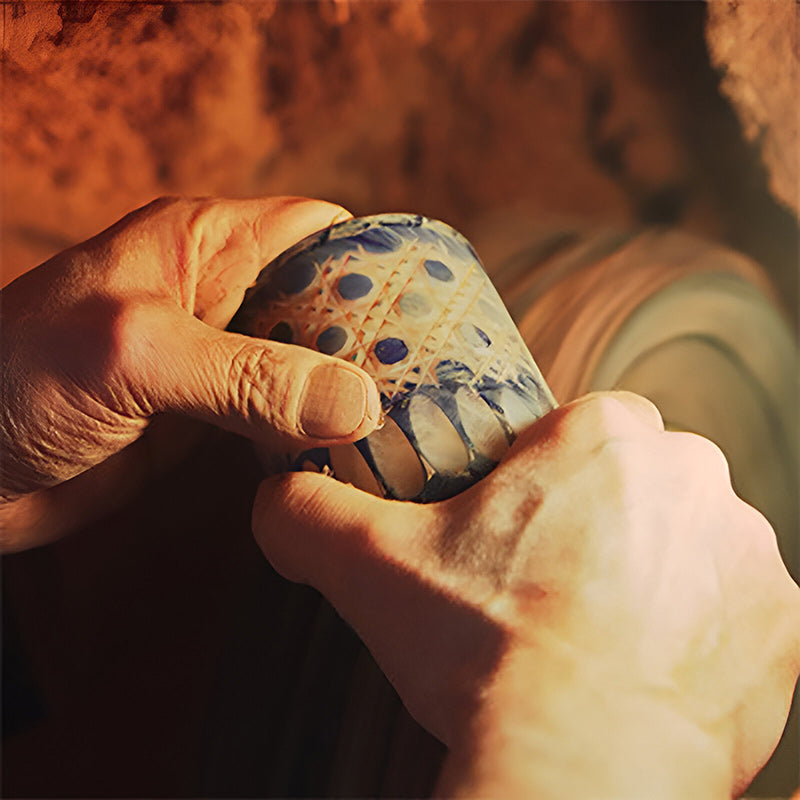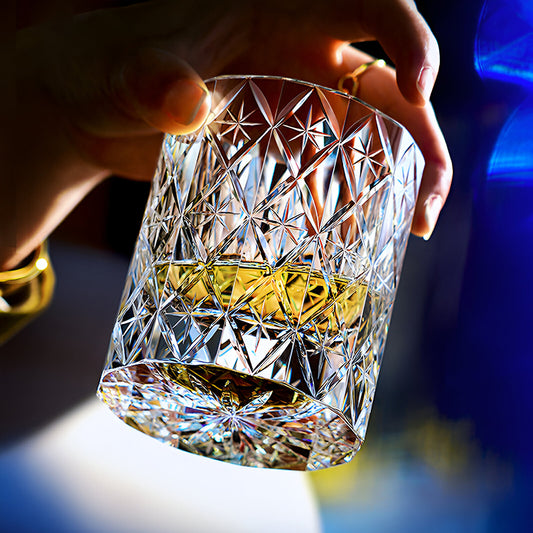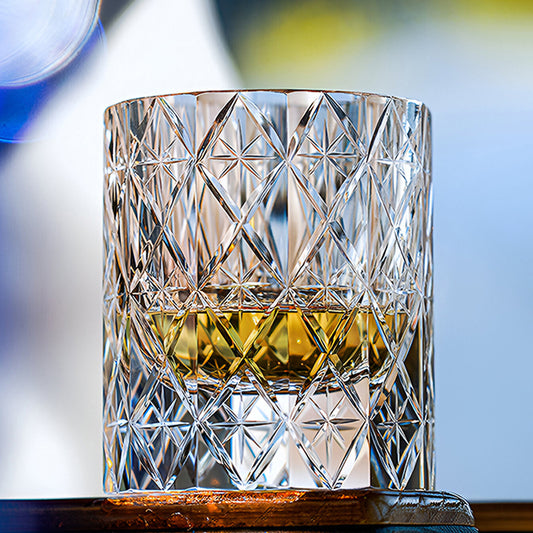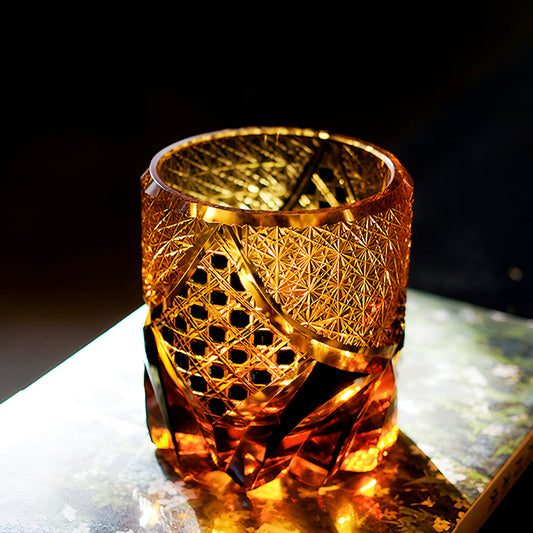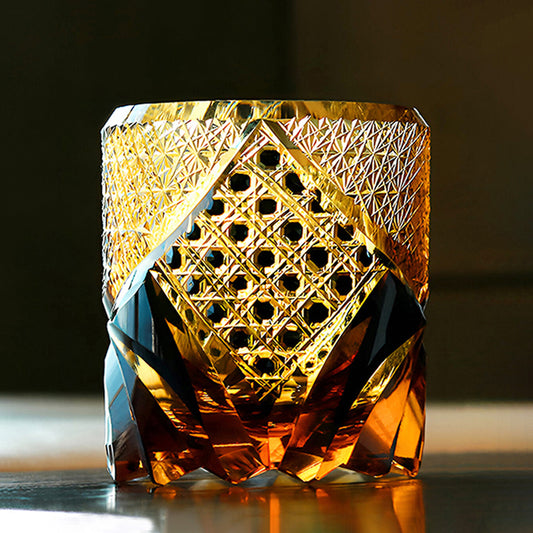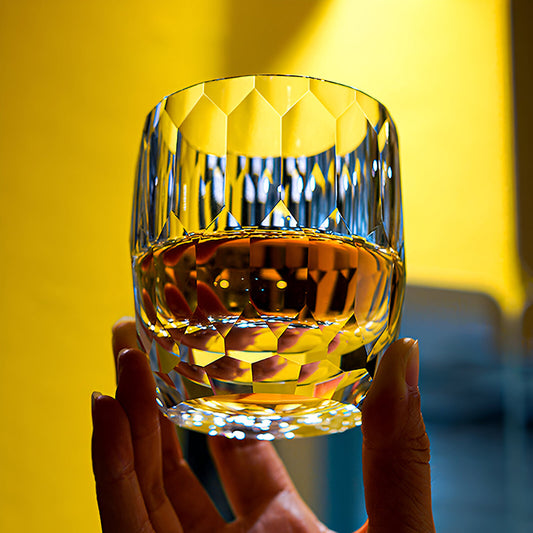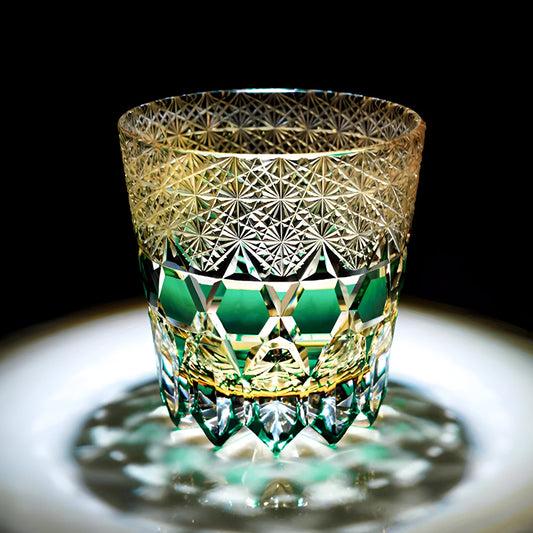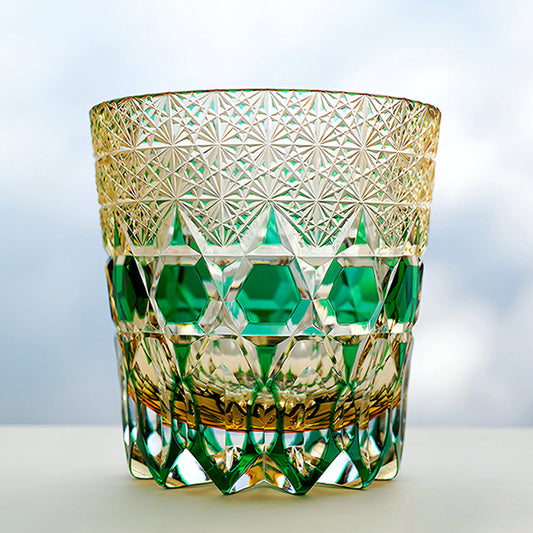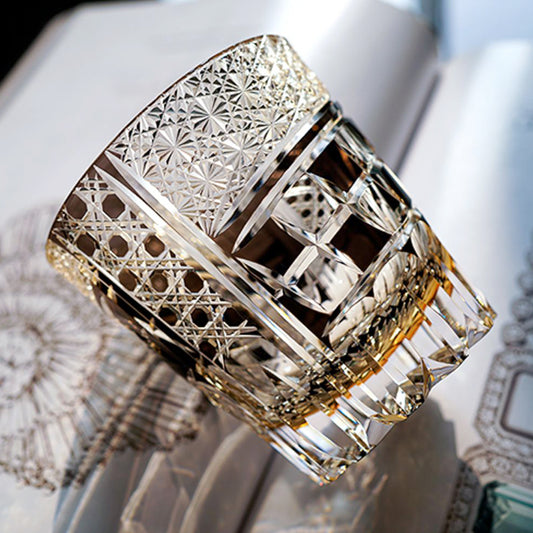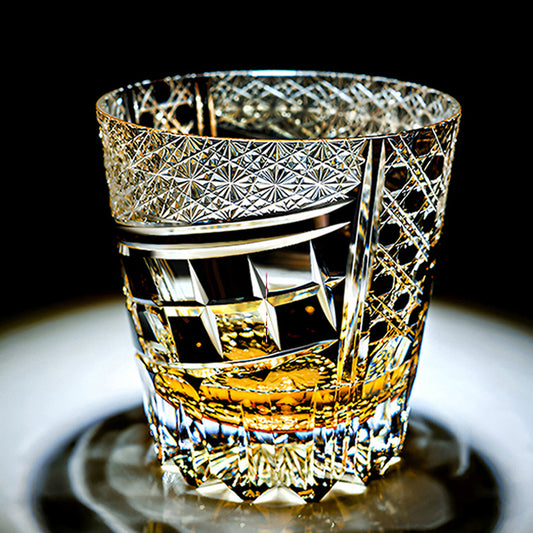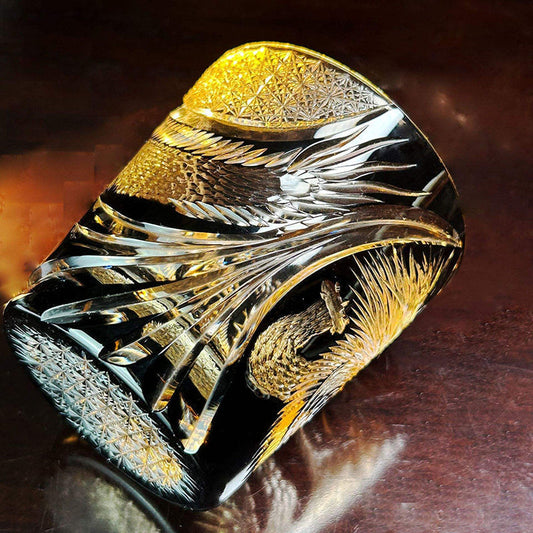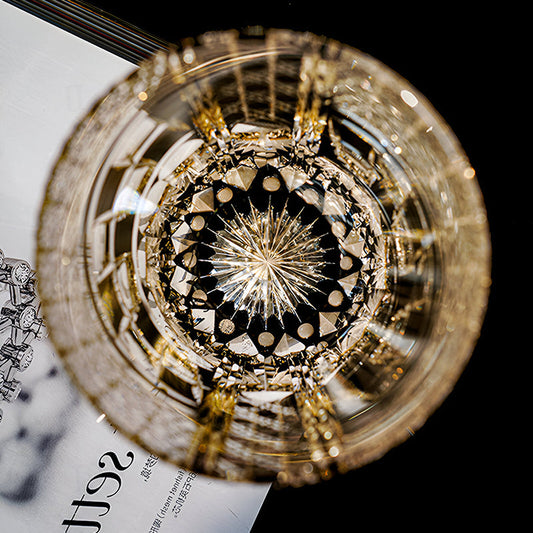In the folds of time, certain objects stand as witnesses to light and shadow. When amber whiskey is poured into an Edo Kiriko glass, it refracts not only brilliant starlight but also a sonnet about eternity and the fleeting moment. This ancient craft born in the late Edo period reinterprets the resonance between objects and life through modern design language.
1.The Temporal Folding of Artisanal Spirit
In the Edo Kiriko workshop, the diamond carving knife in the artisan's hand acts as a magical pen that freezes time. Each 0.1-millimeter engraving demands absolute synchronization of breath and heartbeat, seeking delicate balance between transparency and depth. Within the 230 standard procedures lies a profound understanding of material mechanics: cutting angles must be precise to 58 degrees, the golden angle for optimal light refraction. When an apprentice completes their first qualified piece, they have often spent seven full cycles of seasons observing beside the artisan.

2. The Refractive Poetics of Aurora Patterns
The intricate patterns known as 'Arctic Aurora' by artisans are, in fact, a physical poetic dance of light with glass. By controlling cutting depths between 0.3-0.7 millimeters, micron-level prism arrays are constructed on the crystal surface. As whiskey's amber nectar flows through, precise engravings activate quantum leaps of light. The refractive index of the liquid varies with concentration gradients, causing the originally rich brown hue to manifest as a triple illusion of sapphire cold light, solar coronal gold rings, and dusk purple haze. This optical marvel, based on the principles of Fresnel diffraction, transforms every drinking posture into an irreplicable prism theater, allowing molecular vibrational spectra to narrate liquid light-years on the cup walls.
3. The Human Theater within Vessels
At the top whiskey bar in Tokyo's Ginza district, mixologists pair specific year whiskies with bespoke Kiriko patterns: Yamazaki 18-year-old complements the crispness brought by snowflake patterns, while Macallan 25-year-old shines alongside the starburst effect of diamond cuts. A collector even customizes a series of cups based on the twenty-four solar terms, using cherry blossom patterns for the spring equinox and ice crack patterns for the winter solstice, turning vessels into ceremonial carriers of time. When the cup walls chime like wind chimes upon collision with an ice sphere, even the most discerning taste buds bow to this sensory fusion experience.

This glass, carrying the craft secrets of two centuries, fundamentally embodies humanity's eternal quest for perfect form. In today's era of rampant mechanized production, Edo Kiriko artisans persist in maintaining a pace of completing only three pieces per day. This almost Zen-like restraint turns each piece into a tangible time capsule. When our fingertips glide over those meticulously calculated edges, we touch not just the cold glass but also the artisan's life engraved into the material's warmth.


